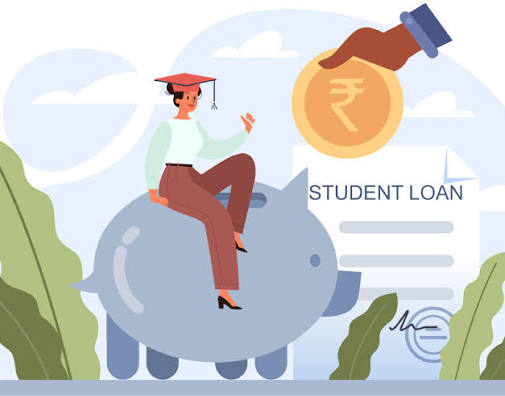Introduction
Student loans have become a significant financial responsibility for many pursuing higher education. With the rising costs of college, borrowing money to fund your studies is often necessary. However, managing student loans—from the initial borrowing to eventual repayment—requires careful planning and discipline. This guide offers a step-by-step approach to help you understand, manage, and repay your student loans effectively.
1. Understanding Student Loans
Before diving into the borrowing process, it’s essential to understand the different types of student loans and their terms.
Federal vs. Private Student Loans
- Federal Student Loans: These loans are offered by the government and generally have more favorable terms. They typically come with lower interest rates and more flexible repayment options. Common types of federal loans include Direct Subsidized Loans, Direct Unsubsidized Loans, and Federal PLUS Loans.
- Private Student Loans: These are offered by private lenders like banks and credit unions. They may have higher interest rates and fewer repayment options compared to federal loans. Private loans are often used to supplement federal loans if additional funding is needed.
Interest Rates and Loan Terms
The interest rate plays a crucial role in determining the overall cost of your loan. Federal loans tend to have fixed interest rates, while private loans can have either fixed or variable rates. Understanding how interest accrues is also essential—subsidized loans don’t accrue interest while you’re in school, but unsubsidized loans do.
2. Borrowing Student Loans: What You Need to Know
When deciding to borrow for your education, there are a few key steps to follow to ensure you’re making an informed decision.
Step 1: Fill Out the FAFSA
The Free Application for Federal Student Aid (FAFSA) is the first step in securing federal student loans. This form collects your financial information and determines your eligibility for federal grants, work-study programs, and loans.
Step 2: Understand the Loan Terms
Carefully review the loan offer details before accepting it. This includes the interest rate, repayment schedule, and any fees associated with the loan. Understanding these terms will help you avoid unexpected costs in the future.
Step 3: Borrow Only What You Need
It’s tempting to borrow more money than necessary, but it’s crucial to borrow conservatively. Remember, you’ll have to repay this money with interest. Borrow only what you need for tuition, living expenses, books, and other essential costs.
Step 4: Explore Scholarships and Grants
Before relying on loans, explore other forms of funding such as scholarships and grants. These funds don’t require repayment, and they can significantly reduce your need for loans.
3. Managing Student Loans During School
While you’re still in school, there are several strategies to minimize your debt and prepare for repayment.
Pay Interest on Unsubsidized Loans
Interest on unsubsidized loans begins accruing immediately. If possible, consider paying off at least the interest while in school to prevent it from being added to your loan principal.
Consider Deferment or Forbearance
If you’re unable to make payments, you may be eligible for deferment or forbearance, which allows you to pause or reduce payments temporarily. Be aware, however, that interest may still accrue during this time, particularly with unsubsidized loans.
Keep Track of Loan Balances
Stay on top of how much you owe by checking your loan balances regularly through your school’s loan servicer. Knowing your current balance helps avoid surprises when repayment begins.
4. Preparing for Loan Repayment
As you approach graduation, it’s time to start preparing for the repayment phase.
Know Your Grace Period
Federal loans typically offer a six-month grace period after graduation before repayment begins. During this time, interest may accrue on unsubsidized loans, so if possible, make interest payments to reduce the total amount due.
Choose Your Repayment Plan
Federal student loans offer various repayment plans:
- Standard Repayment Plan: Fixed monthly payments over 10 years.
- Graduated Repayment Plan: Payments start low and gradually increase.
- Income-Driven Repayment Plans: Payments are based on income and family size.
- Extended Repayment Plan: Extended up to 25 years, lowering monthly payments.
Choosing the right plan depends on your income, job prospects, and long-term goals.
5. Repayment Strategies: Paying Off Your Loans
When repayment begins, there are strategies you can use to pay off your loans more effectively.
Make Extra Payments When Possible
Paying more than the minimum monthly payment can reduce your loan balance faster and lower the amount of interest you’ll pay overall.
Refinance or Consolidate Your Loans
If you have multiple loans, consolidation or refinancing may simplify repayment by combining them into a single loan with a single monthly payment. Be cautious when refinancing federal loans, as it may cause you to lose certain benefits like income-driven repayment plans.
Consider Loan Forgiveness Programs
Some careers offer loan forgiveness programs. For example, the Public Service Loan Forgiveness (PSLF) program provides loan forgiveness after 10 years of qualifying payments for those in public service jobs.
Stay in Communication with Your Loan Servicer
If you face financial challenges during repayment, don’t hesitate to contact your loan servicer. They can help you explore options like deferment, forbearance, or alternative repayment plans.
6. Avoiding Default: What You Should Know
Defaulting on a student loan can lead to serious consequences such as wage garnishment, damage to your credit, and even legal action. To avoid default, stay in touch with your loan servicer and explore repayment options. If you’re struggling, an income-driven repayment plan may help reduce your monthly payment.
7. Conclusion
Managing student loans effectively requires a well-thought-out approach, from borrowing responsibly to making informed repayment decisions. By understanding your loan options, borrowing only what you need, and staying proactive during the repayment phase, you can avoid the financial strain that often accompanies student loans. Keep a close eye on your loan balance, communicate with your loan servicer, and explore repayment strategies to reduce your debt as efficiently as possible.

